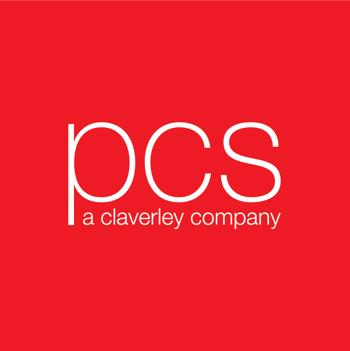
Do your main software platforms do everything you want them to do? Does your ad sales platform manage not only the bookings, but the whole customer relationship? Does your content management system not only efficiently manage your digital assets, but also the whole editorial workflow?
If the answer to any of those questions is ‘no’, then you might want to chat to us, says Simon Weare, development director at publishing software specialists, PCS Publishing. I was in Wolverhampton on an unseasonably sunny February day to meet recently promoted Simon.
“It’s important to offer publishers complete 360-degree solutions.”
“Take advertising software for example. Managing bookings is, of course, central to any ad system but that’s only half the picture. It should also be a full commercial platform. Our Knowledge Prospect system manages the whole commercial relationship, and includes full contact management capabilities and sales ledger.”
“Similarly, in our view, digital asset management (DAM) is just one part of a comprehensive content management system (CMS). They are not synonymous. A good CMS should, crucially, also include sophisticated highly configurable workflow controls, allowing the publisher to tightly specify who does what and when in the editorial process from content origination right through to publication in multiple channels. Knowledge Publish manages the whole content journey and is another example of our rounded approach.”
PCS has been providing software solutions across all publishing functions for over 45 years, initially for the newspaper sector, but latterly, increasingly for magazine publishers too. Indeed, a five-title magazine publisher printed their first edition in March, built using PCS’s Knowledge platform.
PCS is part of the Claverley Group, which also includes the Midland News Association, publishers of the Express & Star and Shropshire Star, children’s magazine publisher Kennedy Publishing, creative and print-procurement agency Cubiquity and magazine printer Precision Colour Printing.
“The benefit of being part of a large and well-established group”, says Simon, “is twofold. Firstly, it gives us the necessary stability to plan and develop for the long term. The development of Knowledge Prospect, which was released last year, was a multi-million pound investment spread over four years. Claverley took the long view. Secondly, being part of a publishing group give us unique access to publishers. This means that our software is not developed in splendid isolation, but in deep collaboration with demanding end-users. We’re in the same building as the Express & Star and are in constant touch. Deep insight into client behaviour would be top of any developer’s wish list, and we have it virtually on tap.”
PCS’s development team consists of fifteen people, nearly half the total headcount and is headed by Simon who has been at the company over twenty years, starting off as a junior bench engineer. Prior to PCS, he worked in the world of robotics, developing automated ‘pick and place’ solutions for manufacturers like Toshiba and Mitsubishi. So, streamlining workflows and process automation is in the blood.
Publisher facing
During his time at PCS, Simon has had a number of roles including client services manager. From a publisher’s perspective, it’s worth pointing out that most of his roles have been client-facing, working on installation and training projects, so he is well placed to interpret publisher needs: “I feel that the long stint in customer services has given me a unique outlook. It’s made me much more inclined to see software from the publisher’s perspective.”
How, I ask him, would he describe his approach to development?
“The thing to avoid is a disconnect between the client and developer, when user-speak clashes with developer-speak and things get lost in translation. This leads to wasted time, solving the wrong problem. There’s no point labouring ten hours on a feature, however technically brilliant it might be, if no one is going to use it. And that is why I put such an emphasis on open communication. We have recently introduced new comms software within the team which facilitates regular communication and collaboration and allows each team member to see where their work fits into the bigger picture. I also try to get team members in front of clients as often as possible, to make sure that the whole team is focused on publisher needs.”
“I’m a big one for asking questions, lots of them, but two in particular: ‘Where are your pain points?’ and ‘Why do you do it that way?’ This usually gets to the nub of the issue and helps us understand why things are done in particular ways. It also allows us to suggest alternative ways of working which might save the publisher time and money.”
With all his years sitting with publishing clients, he must have observed a lot about how publishers operate. What advice, I ask him, could he give publishers looking to transform their business. He had six tips:
- Audit your workflows.
- Use editorial templates.
- Turbo-charge your content.
- Create a single customer view (SCV).
- Get in the cloud.
- Explore the potential for shared services.
“If you’re not using a system like Knowledge Publish, and your workflows are loosely documented and not systemised, then there’s a good chance that things occasionally get missed and tasks take longer than they should. Over the years, inefficiencies will have crept in. The cumulative effect can be quite significant. Taking time out to audit your processes will enable you to spot and iron out any problem areas. The resulting new workflows should then be plumbed into your content management system to ensure compliance.”
“Still, mystifyingly, frowned on in some quarters, using templates is a potential game-changer if you’re not using them already. Creating templates for your most commonly used page layouts saves massive amounts of time. It means your journalists can spend more time creating brilliant content and less time drawing boxes.”
“Content is not a disposable, single-use commodity. Each item of content – be it text, pictures, video or audio – should be correctly tagged, easily accessible with full publication history and permissions, to allow rapid reuse. The quality and quantity of publisher output can be greatly increased by having a properly structured CMS. The future belongs to the nimble.”
“The SCV is not new, yet many publishers still soldier on with only a partial picture of their customers’ activities. The more systems you use and the more dispersed your datasets, then the harder it will be to achieve a SCV. In such situations, manual workarounds are inevitable. This means wasted time in marketing planning and poor decision making. Our approach can be characterised as a ‘single source of truth’ – one system with super-tight integration, rather than a collection of loosely connected systems.”
“Hosting software locally involves considerable investment in hardware and management time. Cloud-based computing is now well-established. It’s a simple enough concept. In effect, you are just using someone else’s computer. Why throw money away on hardware and infrastructure when you don’t need to? Our solutions are cloud-based…”
“Publishers have been sharing services like print and distribution for years but it could be extended further. One client uses our software to provide ad production services to a number of other publishers. The direction of travel is clear, and we should be open to radical thinking to see what else can be shared. Why not credit control, for instance? Shared services allow publishers to concentrate resources on where it matters most.”
Too much hassle?
The common threads running through all of Simon’s advice are control, rationalisation and transparency. The more effective publishers can be in each of these areas, the more profitable they will be.
So, what’s stopping them?
“It’s funny”, says Simon; “we always see our number one competitor as ‘Do Nothing’. Faced with system challenges, the easiest option is to make do with what you currently have, however inadequate it might be. Partly, it’s question of “better the devil you know”, and, partly, changing systems is seen as “too much hassle”. After all, the current system works (just), right?”
“But, how can a publisher be at the top of their game, when they’re hamstrung by systems that are not fit for purpose?”
“Any software supplier worth its salt is well versed at managing a transition process, reducing risk and hand holding where it’s needed. So, that shouldn’t be the reason for inaction. The key thing is to see a good platform, be it for sales or content creation, as a massive enabler. It removes barriers, allows you to exert greater control, saves time and resources, whilst, at the same time, setting your editorial and sales teams free to realise their full potential.”
“PCS is in it for the long haul. Our solutions are used and constantly being fine-tuned by some of the biggest publishers in the country. Every day, our systems support the creation of over 10,000 articles across our publishing clients.”
I have heard once-struggling but now flourishing publishers cite “system improvements” as one of the major factors behind their new-found success. Having systems that facilitate the easy retrieval, manipulation and publishing of all your digital assets acts like a breath of fresh air for your publishing teams.
If you’ve ever heard any of your team using “our system can’t do that” as an explanation as to why such and such desirable action didn’t take place, then an exploratory chat with PCS is a good next step.

PCS Publishing
Castle Street, Wolverhampton, WV1 3AD
Hannah Lloyd, Marketing Director
Tel: 01902 374 757
Email: hlloyd@pcs-publishing.com
Website: www.pcs-publishing.com










